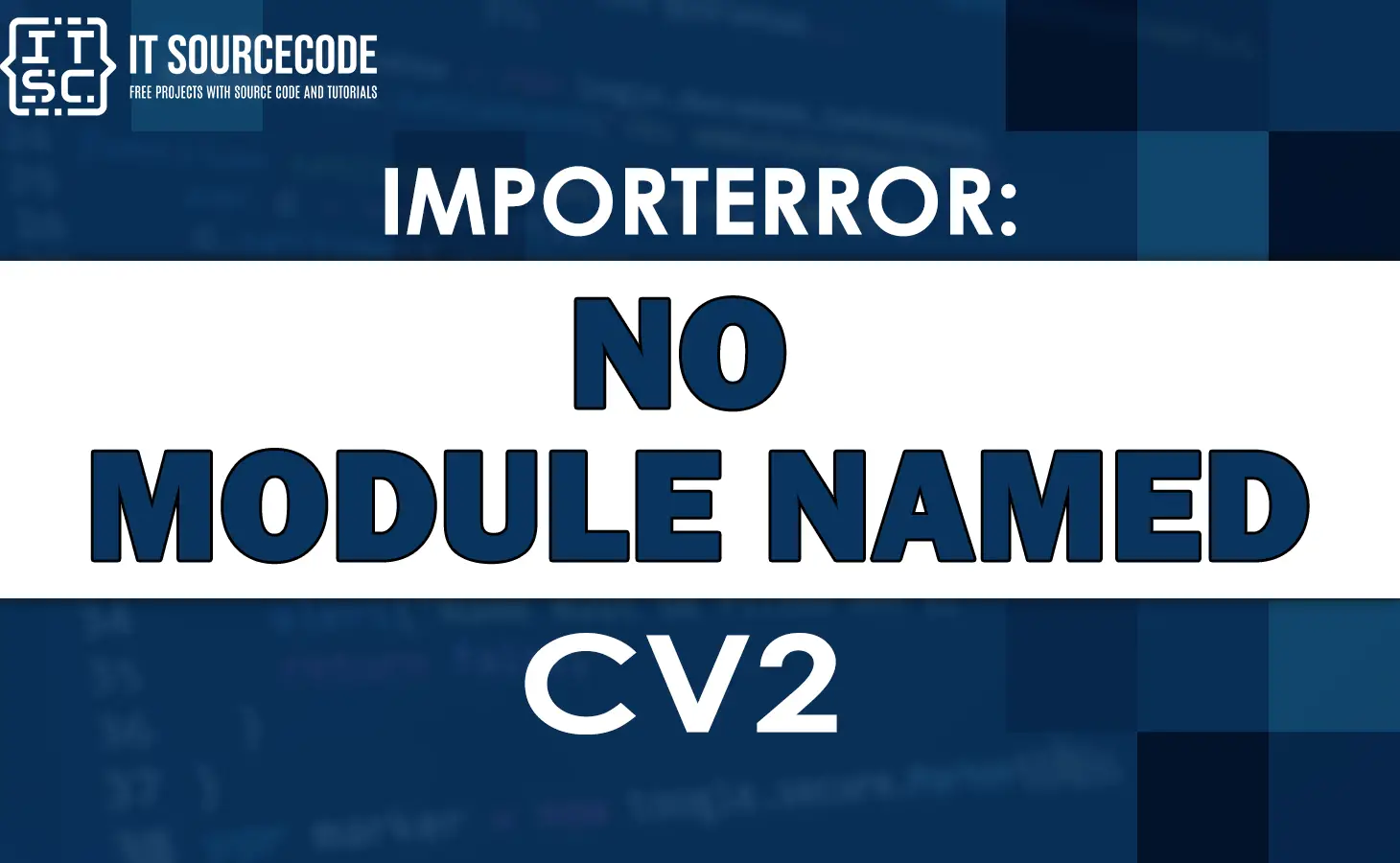Importerror no module named cv2 is one of the errors that occur which prevents successful imports.
Knowingly, importing libraries and modules is a common task in programming.
Therefore this article will guide you through the causes and solutions for this error, allowing you to overcome it and continue working with OpenCV.
What is importerror no module named cv2?
ImportError: No module named cv2 is an error indicating that the cv2 module is not installed on your system.
Wherein cv2 is a module for the OpenCV library, which provides tools for image and video analysis.
There are several reasons why you might encounter the ImportError: No module named cv2 error.
Some possible reasons include:
- The OpenCV library is not installed on your system.
- The cv2 module is not in your Python path.
- You are using a version of Python that is not compatible with the version of OpenCV that you have installed.
How to fix importerror no module named cv2?
To fix the ImportError: No module named cv2 error, you can try the following methods:
Install the OpenCV library
You can install the OpenCV library using pip or pip3.
To do this run the following command:
pip install opencv-python or pip3 install opencv-python
Check your Python path
Make sure that the cv2 module is in your Python path.
You can check your Python path by running the following command in your Python interpreter.
import sys; print(sys.path)
If the cv2 module is not in your Python path, you can add it by appending the directory containing the cv2 module to your Python path.
Here’s how you can do it for different operating systems:
- Windows:
- Open the Start menu and search for “Environment Variables”.
- Click on “Edit the system environment variables”.
- In the “System Properties” window that opens, click on the “Environment Variables” button.
- In the “Environment Variables” window, scroll down to the “System Variables” section and find the PYTHONPATH variable. If it doesn’t exist, click on the “New” button to create it.
- Click on the “Edit” button to edit the PYTHONPATH variable. Add the directory that you want to include to the end of the Variable value field, separated from existing entries by a semicolon (
;). - Click on “OK” to save your changes and close all open windows.
- macOS/Linux:
- Open a terminal window.
- Use a text editor to open your shell profile file (e.g.,
~/.bash_profileor~/.bashrcfor the Bash shell,~/.zshrcfor the Zsh shell). - Add a line to the file that exports the
PYTHONPATHvariable with the directory that you want to include. For example:export PYTHONPATH="/path/to/directory:$PYTHONPATH" - Save and close the file.
- Run the
sourcecommand to apply the changes to your current terminal session:source ~/.bash_profile(or whichever file you edited).
After adding the directory to your Python path, you should be able to import modules from that directory in your Python scripts.
Check your Python version
Make sure that you are using a version of Python that is compatible with the version of OpenCV that you have installed.
You can check the version of Python that you are using by running the command, depending on which version of Python you are using.
python --version or python3 --version
Anyway, if somehow you might encounter ModuleNotFoundError: No Module Named ‘cv2’, we already fix it.
Additionally, here are other fixed errors, which might help you when encountering them.
- Importerror: cannot import name ‘_registermattype’ from ‘cv2.cv2’
- Importerror: no module named serial
Conclusion
In conclusion, the “importerror no module named cv2″ error can occur when importing OpenCV in Python.
However, following the solutions and troubleshooting tips outlined in this article, you should be able to overcome this error and continue utilizing the powerful capabilities of OpenCV for your computer vision projects.
Remember to double-check your OpenCV installation, ensure compatibility with your Python environment, and resolve any conflicting package versions.
Additionally, utilize virtual environments for isolation, check system paths, and consider reinstalling Python if necessary.
I think that’s all for this error. I hoped this article has helped you fix the issue.
Until next time! 😊

